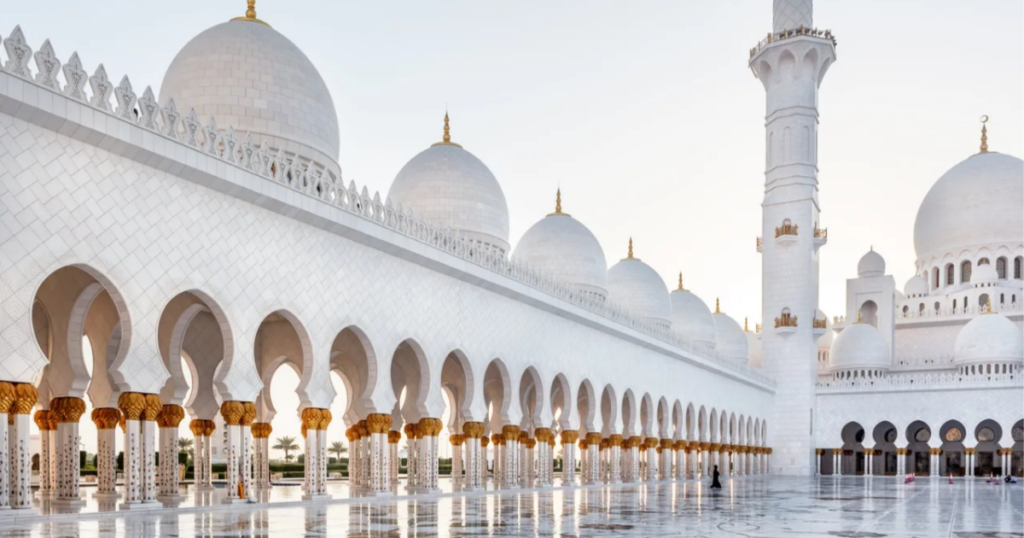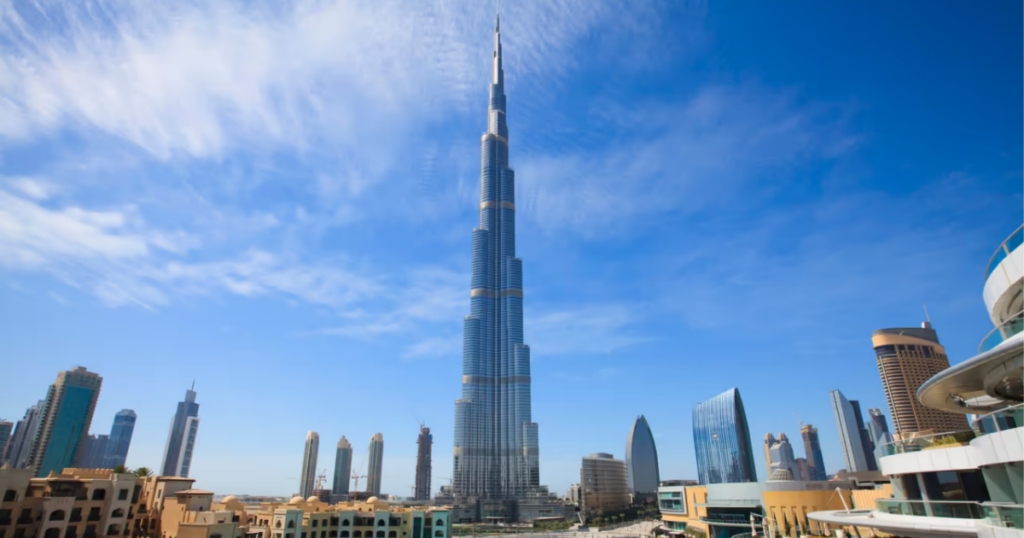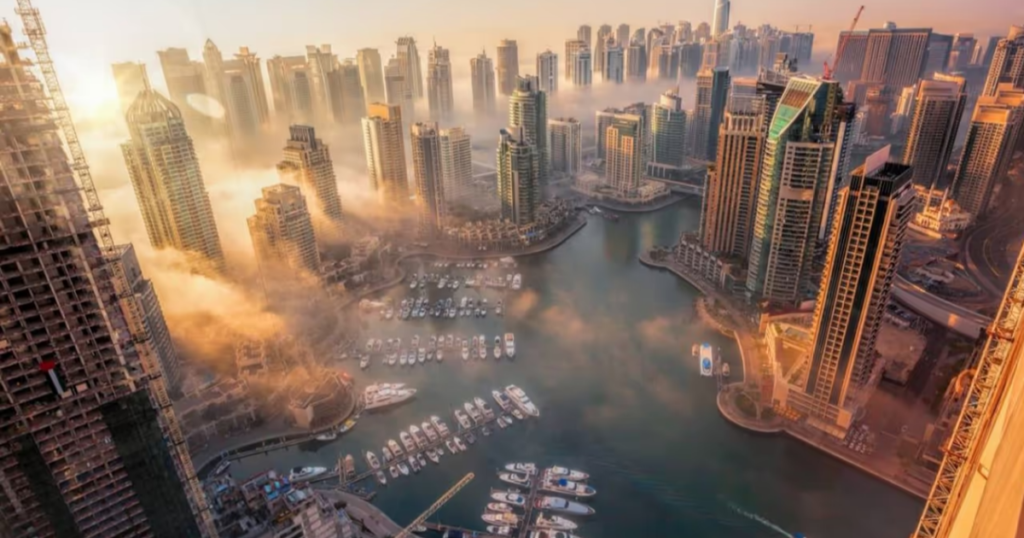United Arab Emirates: A Blend of Opulence, Innovation, and Cultural Diversity.
The United Arab Emirates, Commonly known as the UAE, is a federation of seven emirates located in the southeast of the Arabian Peninsula. Renowned for its opulent architecture, stunning beaches, and extravagant shopping malls, the UAE has rapidly emerged as one of the most popular tourist destinations in the world. Beyond its luxurious facade, the UAE is a thriving hub of innovation, entrepreneurship, and cultural diversity. With a rapidly growing economy, world-class infrastructure, and a strategic location between Europe, Asia, and Africa, the UAE has become a global business hub and a symbol of modernity in the Middle East. In this article, we will explore the history, culture, and economic development of the UAE, as well as its current geopolitical significance in the region and beyond.
Also Read 15 Landmarks To Visit Before You Turn 65

History Of UAE
The United Arab Emirates (UAE) is a federation of seven emirates located on the southeastern end of the Arabian Peninsula. The region that is now the UAE has a rich and diverse history, with human habitation dating back to the Neolithic era.
Prior to the formation of the UAE, the region was inhabited by various tribes, including the Bani Yas tribe, who were the ancestors of the ruling families of Abu Dhabi and Dubai. The region was also a hub for trade, with merchants from across the Arabian Gulf and the Indian Ocean traveling through the area.
In the 19th century, the British established a protectorate over the Trucial States, a collection of coastal sheikhdoms that included what is now the UAE. The British provided protection to the sheikhs in exchange for control over their foreign affairs. This arrangement continued until the 1960s when the sheikhs began to push for independence.
In 1971, six of the Trucial States, including Abu Dhabi, Dubai, Sharjah, Ajman, Umm Al Quwain, and Fujairah, came together to form the UAE. Ras Al Khaimah joined the federation the following year. Sheikh Zayed bin Sultan Al Nahyan, the ruler of Abu Dhabi, was elected as the first President of the UAE.
Since its formation, the UAE has undergone rapid economic growth and modernization. The discovery of oil in the 1950s transformed the region from a primarily agricultural society to one of the wealthiest nations in the world. The UAE has used its oil wealth to invest in infrastructure, education, and technology, making it a global hub for finance, tourism, and innovation.
In recent years, the UAE has also become known for its commitment to sustainability and renewable energy. The country has launched a number of initiatives aimed at reducing its carbon footprint and promoting renewable energy sources, including the development of Masdar City, a sustainable urban development in Abu Dhabi.
Today, the UAE is a vibrant and cosmopolitan country with a diverse population, made up of both Emirati nationals and expatriate workers from around the world. The country continues to play an important role in the global economy and has become a hub for innovation and entrepreneurship in the Middle East.

Culture And Tradition Of UAE
The culture and traditions of the United Arab Emirates (UAE) are shaped by its unique history and geography. The country is a blend of modernity and tradition, with a strong emphasis on hospitality, family, and community.
One of the most important cultural traditions in the UAE is the concept of Bedouin hospitality. This is the practice of welcoming guests into one’s home and offering them food, drink, and shelter. This tradition is deeply ingrained in Emirati culture and is a reflection of the country’s history as a trading hub and crossroads of cultures.
Another important aspect of Emirati culture is the emphasis on family and community. Family is considered the cornerstone of society, and loyalty to one’s family and tribe is highly valued. Emiratis are known for their close-knit family relationships and their willingness to help and support each other in times of need.
Islam is the predominant religion in the UAE, and its traditions and customs are an integral part of Emirati culture. The call to prayer can be heard five times a day, and mosques are a central part of the community. Ramadan, the month of fasting, is also an important cultural tradition in the UAE, with families coming together to break their fast and share meals.
The UAE also has a rich cultural heritage, with traditions that date back centuries. Camel racing, falconry, and dhow sailing are all important cultural activities that are still practiced today. Traditional crafts such as weaving, pottery, and jewelry making are also part of Emirati culture.
The UAE is a diverse country, with a large expatriate population from around the world. As a result, the country’s culture has been influenced by a variety of different cultures and traditions. This is reflected in the country’s cuisine, music, and fashion, which incorporate elements from both Eastern and Western cultures.
Overall, the culture and traditions of the UAE are a reflection of its history, geography, and diverse population. Despite rapid modernization and the influence of globalization, Emirati culture remains deeply rooted in tradition, family, and community.

Top Places And Landmarks To Visit In UAE
The United Arab Emirates (UAE) is a country known for its vibrant culture, modern architecture, luxury shopping, and stunning natural landscapes. Here are some of the top places and landmarks to visit in UAE:
1) Burj Khalifa – Located in Dubai, Burj Khalifa is the tallest building in the world and offers stunning views of the city from its observation decks.
2) Sheikh Zayed Grand Mosque – This mosque, located in Abu Dhabi, is one of the largest in the world and is known for its stunning architecture and intricate designs.
3) Dubai Mall – One of the largest malls in the world, Dubai Mall offers a range of luxury shopping, dining, and entertainment options.
4) Palm Jumeirah – This man-made island, located off the coast of Dubai, is shaped like a palm tree and offers a range of luxury hotels and resorts.
5) Dubai Fountain – Located outside the Dubai Mall, the Dubai Fountain is the largest choreographed fountain system in the world and offers daily shows set to music and lights.
6) Hajar Mountains – Located in Ras Al Khaimah, the Hajar Mountains offer stunning natural scenery and outdoor activities such as hiking and rock climbing.
7) Louvre Abu Dhabi – This museum, located in Abu Dhabi, features a collection of artwork and artifacts from around the world and is known for its unique architecture.
8) Dubai Miracle Garden – This floral garden, located in Dubai, is the largest flower garden in the world and features a range of colorful flowers and sculptures.
9) Dubai Creek – This natural harbor, located in Dubai, offers a range of traditional activities such as dhow cruises and fishing.
10) Jebel Hafeet – This mountain, located in Al Ain, is the second-highest peak in the UAE and offers stunning views of the surrounding desert landscape.
United Arab Emirates (UAE) is a fascinating country that offers a unique blend of modernity and tradition. The country is known for its impressive skyline, luxury shopping, and world-class entertainment, but it is also steeped in a rich cultural heritage that is evident in its architecture, cuisine, and customs.UAE is a country that offers something for everyone, from its stunning natural landscapes to its world-class shopping and entertainment. Whether you are interested in exploring the country’s cultural heritage, relaxing on its beautiful beaches, or experiencing the excitement of its modern cities, the UAE is a country that is sure to leave a lasting impression
Do Let Us Know How Did You Find Our Article In UAE, Also let us know in the comments if there was anything we missed or if you want us to cover.
Follow us on Youtube
Follow us on Facebook
Follow us on Twitter
Follow us on Instagram


City of gold